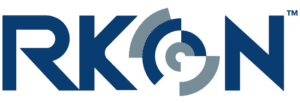Technology has changed the playbook for most organizations today. Applications and infrastructure deliver business value beyond what typical cost-cutting measures can achieve.
The same holds true in private equity (PE) deals, especially for complex merger and acquisition (M&A) transactions. RKON’s Advisory Services has seen first-hand – hundreds of times – how the right technology strategy can rapidly accelerate value creation.
Our experiences have caused us to prioritize four factors that not only accelerate timelines, but also ensure IT optimization and efficiency:
- Strategy
- Business applications
- IT infrastructure
- Security, Risk and Compliance
Let’s take a brief look at each one, and how it contributes to value creation.
Strategy
Most PE firms go into an M&A transaction with a deal thesis. However, sometimes it doesn’t include an IT budget.
When RKON is involved early in the deal, we review the existing IT environments of both M&A entities and assess how hardware and software are influencing capital and operating expenses. For example, we’ll look at whether costs can be optimized by shifting data-center services to the cloud; how many software licenses are paid for and being used; and where there may be IT expense overlap.
Depending on how quickly we are invited into the process, we can set a strategy for quick IT wins such as moving an on-premises software application to the cloud. Or we’ll take a longer-term view of optimizing the combined IT environment post-deal close.
Business Applications
This factor is all about how best to support the business. Depending on the deal thesis, we look for ways that applications offer scalability and efficiencies.
For example, the enterprise resource planning (ERP) system being used can have a significant impact. It may be highly customized and cumbersome, which can make the merged system more challenging. We also look at how well it integrates with other critical apps like customer relationship management (CRM) solutions. The less integrated, the more manual processes are required for business users.
IT Infrastructure
Although many organizations have adopted some level of cloud services, we still see significant usage of on-premises data centers. It’s not always beneficial or cost-effective to move everything to the cloud, however, there are use cases where it makes a lot of sense.
For example, it’s wise to have a cloud-based disaster recovery plan. Also, depending on the industry or type of business, there are cost efficiencies to be gained by storing data in cloud environments.
An often-overlooked aspect of IT during M&A transaction is the importance of an accurate IT asset inventory. Not only will this list of hardware and software assets provide insights into near-term costs that could impact the deal, it also will help a Target understand which assets need to be replaced in the first 100 days of post-acquisition.
Here again, we assess the environment, the business risks around migrating to the cloud, as well as existing IT personnel who are managing and maintaining data centers.
Security, Risk and Compliance
Cybersecurity is incredibly important considering how much the threat landscape has changed. Security solutions are a must-have, yet that doesn’t negate the ability to achieve value.
Our approach is to “assume breach” and assess how resilient the existing IT environments are. Can they recover critical data from a backup? How secure are the backups? Issues like these are important because any amount of system downtime due to a breach can create financial and business disruption. Also, security skillsets are in short supply; a lack of expertise on staff can lengthen the time to recover from a security incident.
We have found that value can be created by using a managed security services provider which is one of the managed service offerings that RKON focuses on. These are cost-effective ways to save time and resources, while ensuring the business is secure.
The Bottom Line
The amount of weight we give to each of these factors depends on the deal thesis and how quickly the PE firm wants to deliver value. We will look at the costs associated with strategy, business apps, IT infrastructure and security, risk, and compliance then propose remediation of the most pressing issues.
You can hear more about our approach to value creation in this episode of SecureChat. And if you have any questions, please reach out to us.

